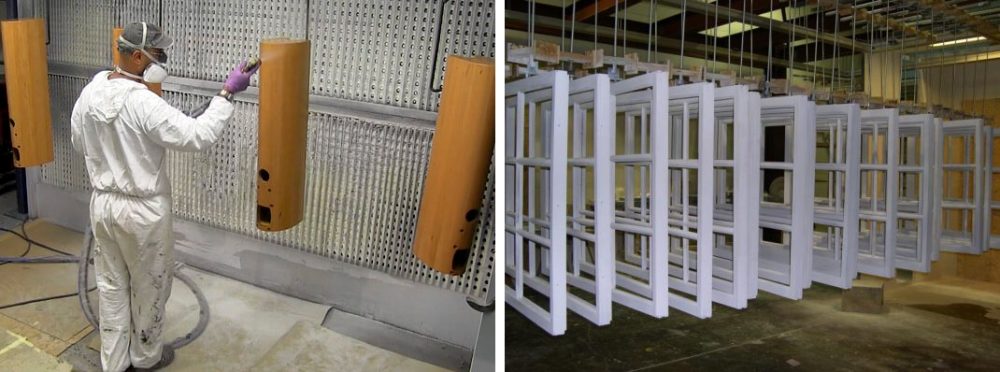The term varnish drips, drips as they are called in production, is used for those drips of material in the form of droplets on the edges of panels or on the sides of assembled furniture, which dry in this form. They can be removed by sanding, if they occur at the intermediate layers, but become a problem when they occur at the final layer. Causes the occurrence of the defect can be use of unsuitable material, wrong material preparation for application, gun defects to apply or its incorrect use, incorrect use of finishing finishing machines.

To avoid spills, one solution may be to use thixotropic materials
When the object on which the varnish is applied is vertical, the risk of material leakage is very high. This is the case when finishing the sides of assembled furniture, windows or turned elements. For such applications there are materials we call thixotropic.
Thixotropy, according to DEX, is the reversible transformation of a gel into a liquid under the influence of mechanical action. Thixotropic materials have a gel-like appearance and perform well when applied vertically. By using them, the amount deposited can be larger than usual without spillage. Dilution is not recommended as they lose this property.

Causes that can lead to leaks
In the technical data sheets and in the technologies there are indications on the preparation for the application of the products and the characteristics of the product on application. The quantity of thinner to be added, the fact that this quantity depends on the temperature and the viscosity of the product on application shall be mentioned. If the application viscosity is lower than recommended (too much thinner has been added), there is a risk of spillage.
Sometimes spills can occur due to the nozzle of the spray gun. Thinner should be sprayed through the nozzle of the spray gun if, after application, it is left to stand for a short period, and the nozzle should be thoroughly washed and left in the thinner until the next use. Over time, the nozzle wears out and may swell, allowing more product to pass through and leaks may occur. In this case the nozzle must be replaced.
Spills can also occur if the gun is too close to the object or not placed in the correct position (in the case of spray robots) or the conveyor belt is moving too slowly.

Removing the defect
When spills have appeared they can be removed by sanding. In order not to damage the entire surface, it is best to carefully remove excess hardened material with a metal scraper (țicling, as it is known in the factory). After removal, sand between coats in the usual way and proceed to the next stage of the process.
If you have such problems and want to know more about the causes and solutions, write to us in the comments area at the end of the article and we'll get back to you as soon as possible.
You can also find causes and solutions for other faults:




































[...] Finishing defects - Varnish leaks [...]
[...] Finishing defects - Varnish leaks [...]
[...] Leaky lake [...]